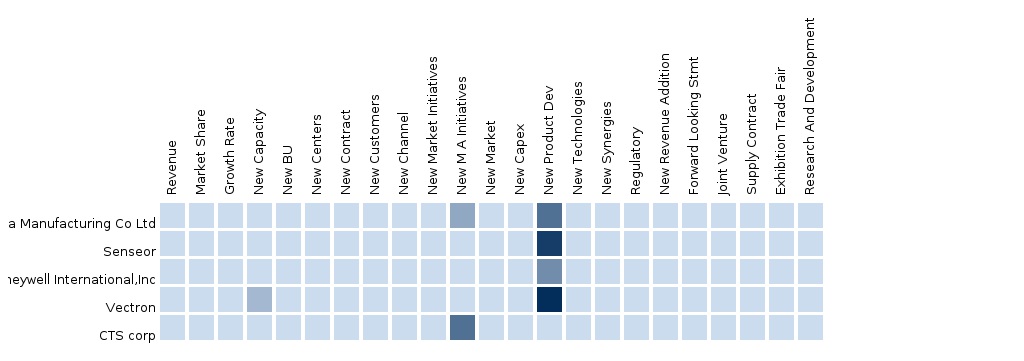Acoustic wave sensors are expected to show good growth across different application segments due to their competitive advantages over the other technologies. As of now, temperature, pressure, torque, and viscosity sensors are the only ones to have reached complete commercialization but we predict a healthy growth of the other sensors as well in future as more applications of acoustic wave sensors get realized in the years to come. Acoustic wave temperature and pressure sensors are increasingly used in automotive and industrial applications with some applications of torque sensors as well.
Automotive industry is known for developing new applications and will continue the trend of leaving space for the development of new sensor technologies. For example, a micro-electro-mechanical sensor (MEMS) technology is an example for new applications such as pressure sensing in TPMS system, and inertia sensors. Benefits of MEMS technology to the auto industry include cost reduction and space reduction as compared to competing technologies. Surface acoustic wave sensors are a type of micro-electro-mechanical systems (MEMS) that rely on the modulation of surface acoustic waves to sense a physical phenomenon. Currently, acoustic wave sensor has limited applications in automotive segment such as torque sensing electronic power steering, TMPS, and combustion engine monitoring but numerous applications are expected to emerge as the technology reaches its maturity.
Governments play a significant role in the growth of the automotive sensor. Environmental regulations such as Euro 5 and Euro 6 in Europe tend to limit pollution; thus increasing the emphasis on combustion engine monitoring. Legislation called “TREAD Act in U.S.” has made the installation of TPMS in all the vehicles mandatory and this could be a good source of revenue stream for acoustic wave sensors.
The global passenger car was approximately $60 million in 2011 and is expected to reach $95 million in 2018. With a growing number of applications of these sensors, especially on rotating components, they are expected to considerably penetrate the automotive market. Also, APAC market is expected to grow at the highest CAGR of from 2013 to 2018, reaching approximately $45 million in 2018.
Low manufacturing cost and further reduction in prices of these sensors throughout the forecasted period will be amongst the strong factors for increasing their consumption in fast growing application like automotives and healthcare. Europe leads in terms of revenue generation with most of the acoustic wave device manufacturers based there. The fastest growth is expected from APAC which offers great potential for acoustic wave sensors for various applications especially automotives and industrial segment
Customization Options:
With Market data, you can also customize MMM’s assessments that meet your Company’s specific needs. Customize to get comprehensive industry standard and deep dive analysis of the following parameters:
Product Analysis
- Usage pattern (in-depth trend analysis) of products (Segment wise)
- Application Matrix which gives a detailed comparison of product portfolio of each company mapped at country and sub segment level
- End-user Adoption rate analysis of the products (Segment wise and Country wise)
- Comprehensive coverage of Product approvals, Pipeline products and Product recalls
Material Data
- Faucets, soap dispensers, trash cans, hand dryers, paper towel dispenser, and flushes.
Comparative Analysis
- Market data of top companies
- Key developments of top companies

Please fill in the form below to receive a free copy of the Summary of this Report
Please visit http://www.micromarketmonitor.com/custom-research-services.html to specify your custom Research Requirement














